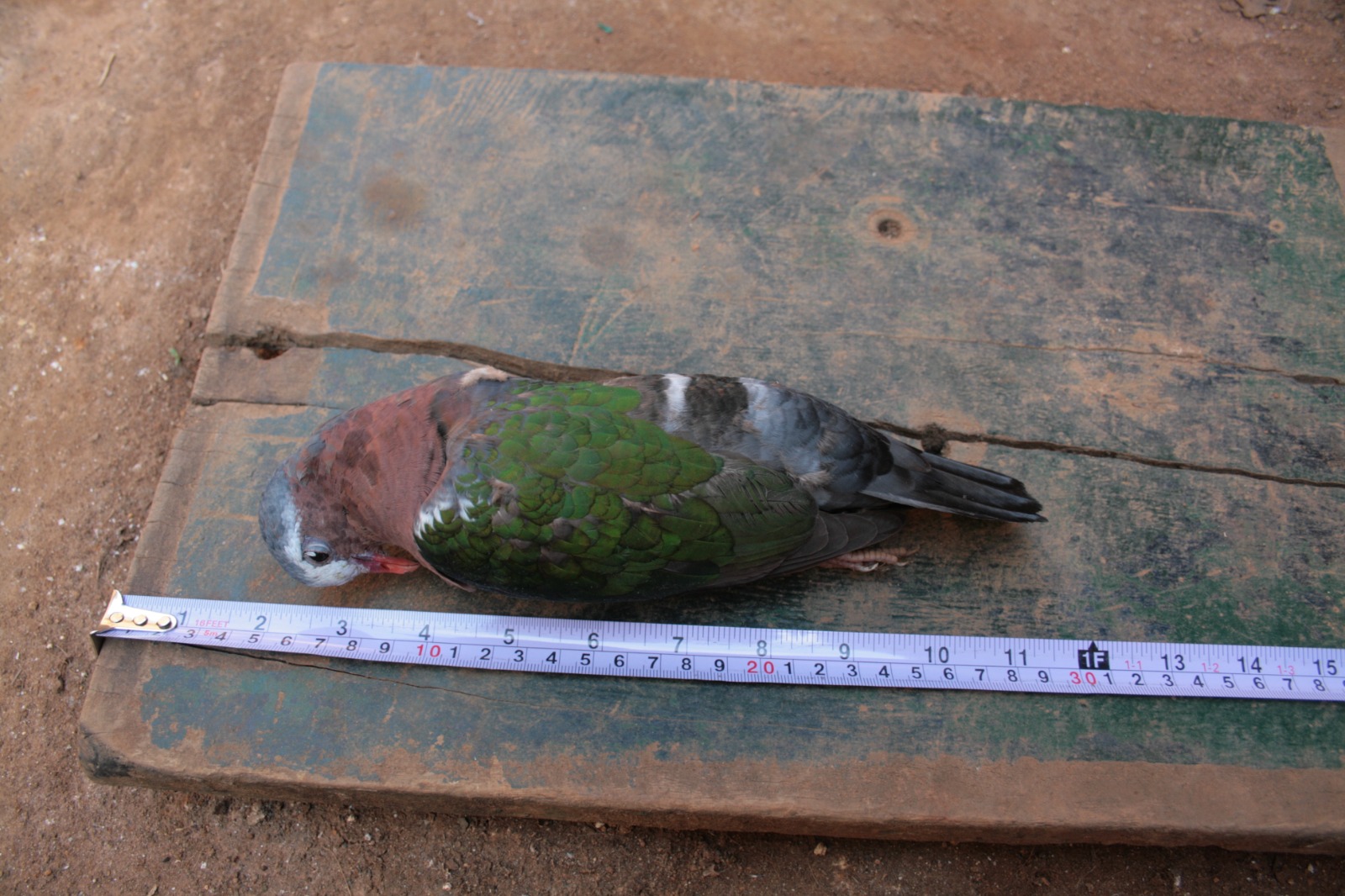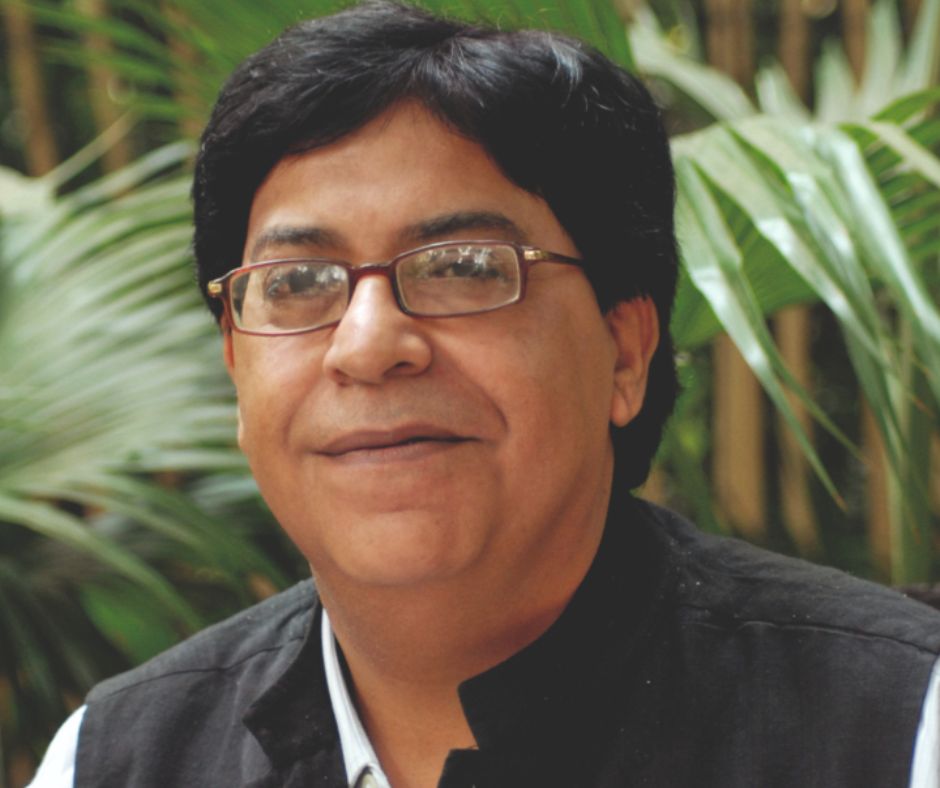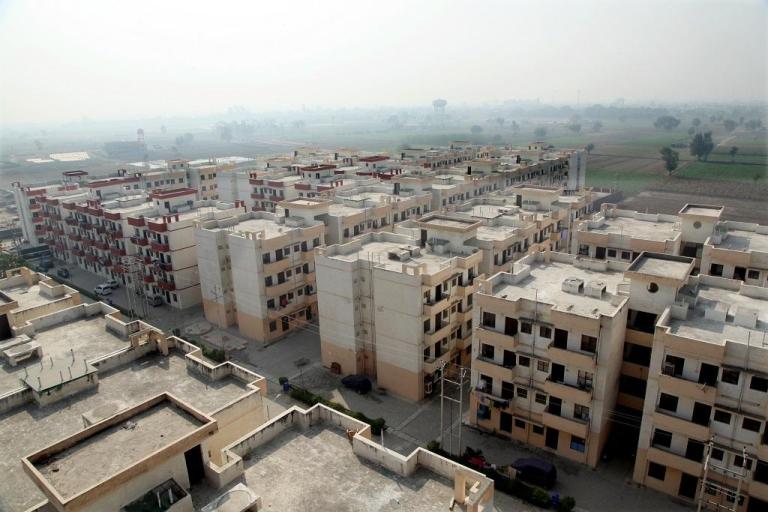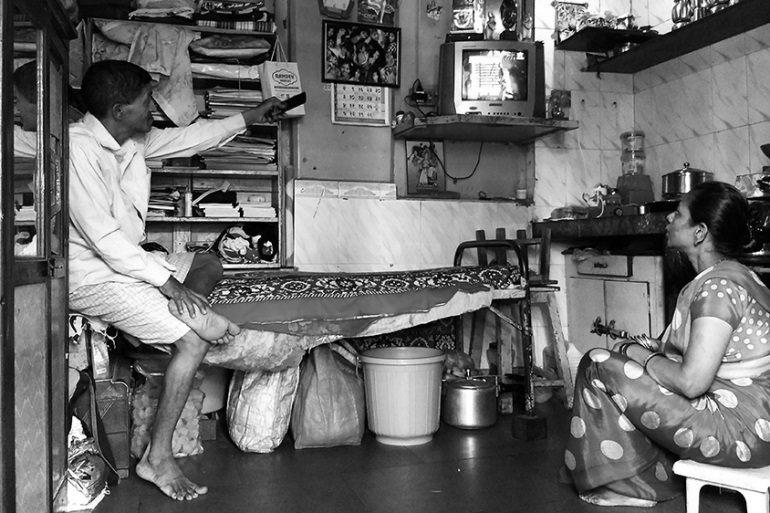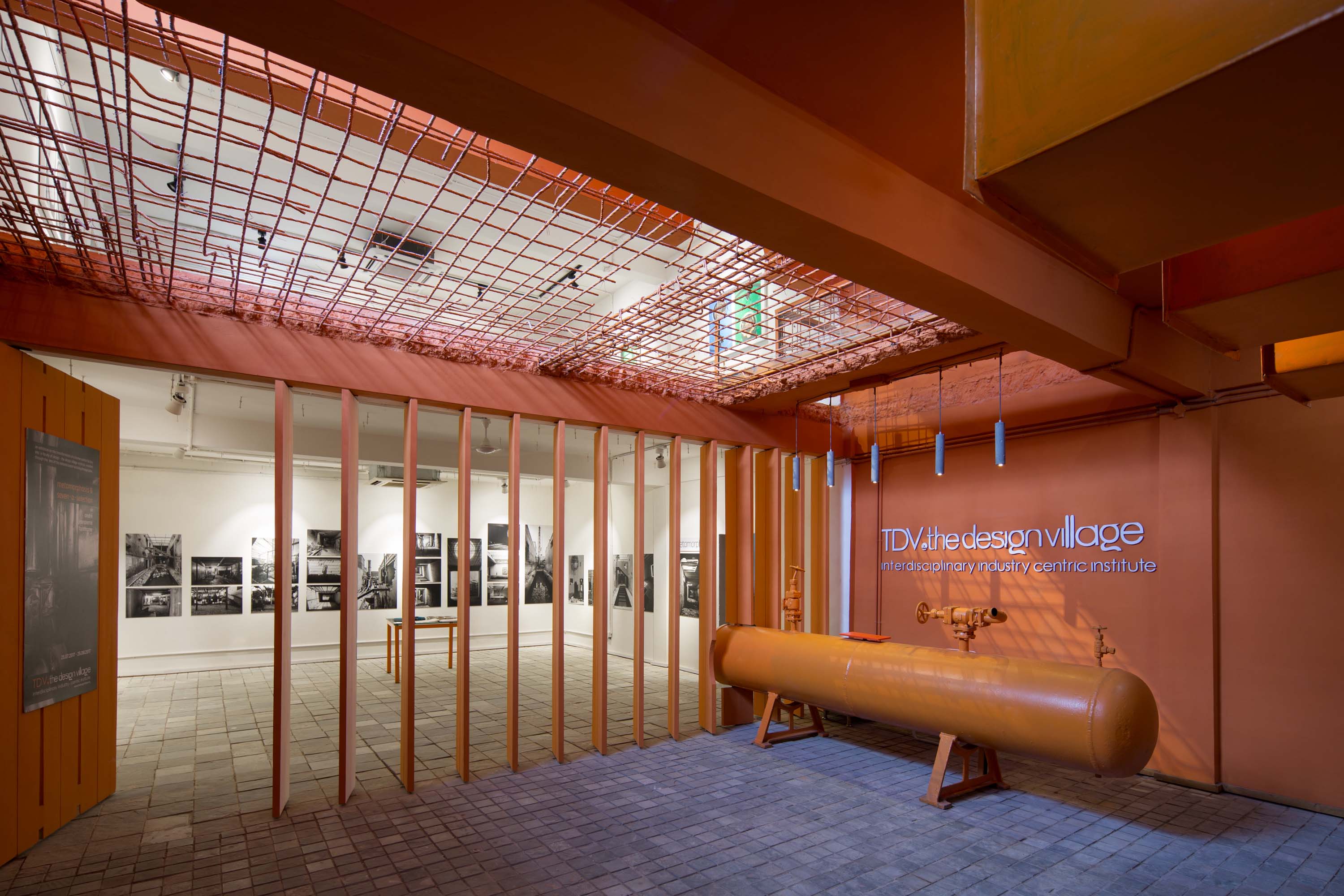
In May 2017, TDV – The design village – interdisciplinary industry centric institute – decided to move its exisitng campus to a larger permises to accommodate the growing number of students at the design school. However, reluctant to leave its exisitng eco-system of five years in its parent company – studio archohm – an architecture and design studio in Noida – TDV began scouting for room in the neighborhood itself. Owning to the strigent environs, TDV looked no further than the neighbor across – an old abandoned Kattha (catechu) factory and saw immense design and renewal potential. Therefore, within days, the deal was struck and the plot across was ready to be revitalized before the students came back late in July. Two months was all the time that was given by fate, to the turn fate of this old manufacturing unit in a desolate state of urban decay. Studio Archohm and students from the village, helped convert this former nightmare facility into a dream village – retaining its inherent character while injecting new life. Narratives of the past were kept intact while giving the campus a new meaning.
By the means of a photographic exhibiton by award winning architecture photographer – Andre Jeanpierre Fanthome, we bring to you to process of the transforming this space – from a polluting factory to an inspiring institute – the daunting journey of what it took to bring it to life, with the excruciating constraints of time, budgets, context and its rather challenging spatiality.
The Kattha Factory – C 29 & C75
‘Let food be thy medicine and medicine be thy food.’
-Hippocrates
The tradition of chewing betel leaves-Paan is as ancient as India itself. Ostensibly an antiseptic, digestive aid and a palate cleanser, Paan has been accompanied by an assortment of ‘add-on ingredients’- Choona (mineral slaked lime or calcium hydroxide), Kattha (catechu), Supari (areca nuts), Loung (cloves) and Elaichi (cardamom), tobacco, spices, mint, sweetened coconut, other Paan–Masalas, sugar, dates, Gulkand(Rose petal preserve), cherries, and variety of Saunfs (fennel) to name a few! Of these, ‘Kattha’ is a very popular and important one. The wood from the Khair (Acacia) tree, is boiled and the brew evaporated to get the paste that endows the blood red colour to the mouth and lips; thus it is Kattha which is responsible for the theatrics of eating Paan.
The Kattha factory C-29 where we now stand, was set up in 1987 as an extension of the one existing facilties at C-75, sector 8 in Noida. C-29 was bought to be used as a godown to support the high production at C-75 . As many as 150 workers toiled here to produce 30,000 kgs of Kattha each day. The whole production process took about a month and a half. However, due to the increased levels of pollution and harm it caused to the neighboring vicinity, on December 2014, the unit was asked to shut down and cease activities.
Kattha ki Kathaa – the story
The wood from the Khair (Acacia) tree (the raw material for Kattha) -was stored in the godown that is now part of the museum on the rear side. The simple and standardised process began with cutting of the wood into 9”X9” chips on wood chipping machines that have been retained as part of the inspirational installations in the current workshop. In the boiling area chips were boiled in water in specially designed pressure cookers called autoclaves, enclosed in a wire cage to avoid direct contact with the heating element. These were the extractors! The now silent boilers can be seen poised dramatically punctuating the core space of the campus-the cafeteria. The machines where the remaining wood was burnt, keep them company here. The extracted decoction was filtered and concentrated, maintained overnight at a temperature that facilitated the separation of the 5% Kattha and the balance biproduct called Cutch( used in the tanning industry and as an additive and preservative), followed by refrigeration that resulted in crystallised Kattha. This was vacuum filtered to eliminate any traces of the mother liquor, passed through manually operated ‘frame and plate’ type filter press, further washed in water to refine its quality and placed on a canvas cloth to remove remaining impurities or Cutch. The condensing mechanism was housed in what now is the double height founders’ room , stored in the present workshop adjoining it and crystallised in the twin rooms comprising the computer lab and the library! Finally uniformly sized tablets were made using a wire cutter/knife and left to dry. The Cutch concentrate as a viscous mother liquor was also left to dry to form the final solidified form of the bi-product. The studios and reception area comprise the dry storage zones. Interestingly, the journey through the tdv campus is like a flashback in time and space; reversing the journey of the assembly line process.
The design intervention
The urban design framework of ‘drosscape’ was the starting point of the intervention. We recognised vestiges of industrialisation as a part of our historical legacy-as much as we did forts and palaces. We then took up the challenge of adaptive reuse of this derelict, defunct, economic and industrial landscape-a reality of the past and transformed it into a dynamic educational landscape-a vision for the present and aspiration for the future.
The concept was founded on creating permanence out of make-shift spaces without losing the essence- that of architecture in continuum. Spaces of no light were converted into places of light! Cellular voids were collated and tied up in a narrative to make large and multiple open spaces for people to interact and evolve through design. It was premeditated that students would never learn in a conventional atmosphere, but would gravitate towards explorations and discoveries that constantly provoked out-of-the-box thinking, instigated questioning and facilitated seeking of answers and that would optimistically lead to eureka moments.
The many big, small and almost always grotesque machines were sculptures and markers in space; they would become companions to students. While they bore testimony to technology as well as hand driven mechanics, both representative of the past, they would find themselves playing a new role as ambassadors of industrial aesthetics. Even imprints of emissions, stains of chemicals and by-products were not erased in places but preserved and celebrated as patinas of the past with stories to tell. The vocabulary of the new was basic and minimal. Apart from the machinery and old walls being celebrated, the material palette was frugal with raw pine wood, glass, cement plaster and steel. Existing structures were either spruced up or completely redone if they were unsafe. Some columns and beams removed were also reused in the spirit of adaption and also to control the economics of the project. Existing mezzanines were used as they were – true to their colours, textures and forms. Materials and meanings were retained to the maximum extent they could.
The space is reinvented and reinterpreted for a imparting design education. It is designed to inspire and evoke curiousity by the sheer simplicity of its aesthetics and ethics of adaptive reuse. It is a space to enlighten minds, break stereotypes – a place to create yet make mistakes, to learn and unlearn, just like the feeling one gets while experiencing this education space and simultaneously recalling its contrasting mullti-layered Kattha making past.
– studio archohm
The Condensation Room – now the founders’ room
The founders’ space is the erstwhile condensation room where the viscous extract from boiling the wood pieces of Khair (Acacia) tree was sent to be filtered and concentrated, maintained overnight at a temperature that facilitated the separation of the 5% Kattha and the balance biproduct called Cutch(used in the tanning industry and as an additive and preservative.)
The program of the reuse – the founders’ room was similarly designed to optimise circulation, to segregate areas that had less to do with each other or unite areas that had much in common. The double height volume, the skylight that accentuated the verticality of the machines coupled with the fact that this was the only space endowed with privacy needed by the people of stature was why this function was allotted to this space.
The Cold Storages – now the Library and the Computer Lab
The cold storage spaces were where the refrigeration enabled the crystallisation of the Kattha. These were spaces with no natural illumination. The twin rooms comprising the computer lab and the library, manned by a central desk are positioned here. From the existing structure of steel frames have been created the low-height reading and stack spaces, without much ado. Once again light was brought into these spaces through large circular openings. The location of the information centre is somewhat central, so both students and mentors could access it easily.
The machine room – now the campus datum
This pivotal area is like the axis of the campus. It segregates the faculty and academic areas from the interaction spaces and gently prods people towards the cafeteria. Formerly – the machine room, this area still reminisces of it as it is littered with machines. The amphitheatre, the cafeteria that lie beyond, the step-wells and the faculty spaces are all hinged around this datum.
The machine corridor – now the Faculty common area
This space was a mere corridor where a machine that repaired other faulty machines was placed nonchalantly. It is now a spacious and well lit gallery for the mentors to redirect their thoughts after a rigorous session with students. With light wells, plantations and the opening up of the rear side of this elongated space, the faculty area is an enviable space, strategically sitting near the administration, tucked in a meeting space with the information and resource centre and cafeteria within easy reach. It is also subtly segregated from the rest of the campus, to give the required privacy to the members of the faculty.
- The Pump room is the Faculty room
It was here that the extract after condensation found itself spending a night to stabilise itself! Now it is a space where the faculty members spend time putting their perspectives together in order to reaffirm the larger vision of the design village. It sports a minimalistic conference table that stands cheek by jowl with the machinery.
The concept of intervention
The derelict, defunct, economic and industrial landscape of the erstwhile factory that manufactured Kattha-an ‘add on’ to Paan (responsible for the theatrics of the red colour imparted to the palate and lips)-a reality of the past has been transformed into a dynamic educational landscape, with a vision for the present and an aspiration for the future.
With the premeditation that students would never learn in a conventional atmosphere, but would gravitate towards explorations and discoveries that constantly provoked out-of-the-box thinking, instigated questioning and facilitated seeking of answers , its concept was founded on creating permanence out of make-shift spaces without losing the essence-that of architecture in continuum. Abundant light was brought in, cellular voids were collated and tied up in a narrative to make large, open and multiple interaction-spaces. The many big, small and almost always grotesque machines were installations in space; they would become companions to students-bearing testimony to technology as well as hand driven processes, they would find themselves playing a new role as ambassadors of industrial aesthetics. The true colours, surfaces and forms of materials were retained; even imprints of emissions, stains of chemicals and by-products celebrated as textures of the past with stories to tell. The minimalistic vocabulary created a frugal material palette- pine wood, glass, cement-plaster, steel. Existing structures were propped up, unsafe ones completely redone, deconstructed columns and beams reused in the spirit of adaption and frugal economics.
The program of the reuse was similarly designed to optimise circulation, to segregate areas that had less to do with each other or unite areas that had much in common. The niche of the condensation room-its double height volume, the skylight that accentuated the verticality of the machines made it suitable for the founder’s room. The twin rooms comprising the computer lab and the library, manned by a central desk are positioned in the cold storage spaces where the refrigeration enabled the crystallisation of the Kattha. The mere corridor where a machine that repaired other faulty machines was placed nonchalantly is now a spacious and well lit gallery for the mentors to redirect their thoughts after a rigorous session with students. The now silent boilers where wood chips were burnt to give the extract can be seen poised dramatically punctuating the core space of the campus-the cafeteria. The machines where the remaining wood was burnt, keep them company here.
Interestingly, the journey through the tdv campus is like a flashback in time and space; reversing the journey of the assembly line process.
Project Information
Typology : Educational
Name of Project : The Design Village
Location : C-29 Sector-8 Noida.
Name of Client’s Firm : The Design Village
Contact Person : Ms. Sharuli Bisht
Address : C-28C, Sector-8, Noida-201301 (Uttar Pradesh)
Tel No : +91-120-4640300
Email : mail@archohm.com
URL : www.archohm.com
Principal Architect : Mr.Sourabh Gupta
Design Team : Subhashish, Harimohan Singh, Soumya, Amit Das, Pawan
Site Area : 2150.0 sqm.
Built-Up Area : 2875.0 Sqm.
Start Date : 26.05.2017
Completion Date : 29.07.2017
CONSULTANTS
Structural : Roark Consulting
Mechanical : Archohm
Electrical : Archohm
Civil : Archohm
Landscape : Archohm
HVAC : Archohm
Plumbing : Archohm
PMC : Archohm
Façade : Archohm
Engineering : Archohm





















































